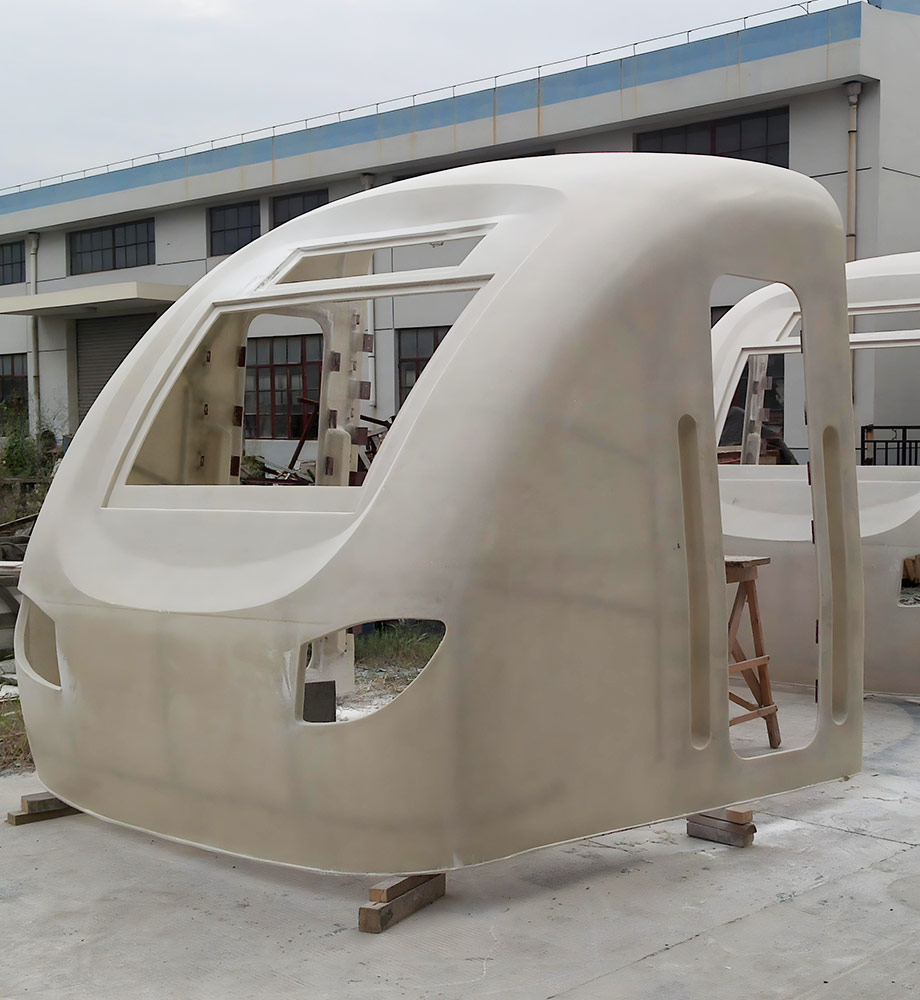Key Features
- Streamlined Profile: Tapered shape optimized for minimal air resistance.
- Energy Absorption: Core material (Nomex honeycomb or foam) acts as a crumple zone in a collision.
- Composite Skin: FRP or carbon-fiber outer skin for high rigidity.
- Fixture Integration: Mounting points for lights, wipers and external rail safety equipment.
Benefits
- Reduced Drag: Significantly lowers aerodynamic drag at high speeds.
- Fuel Savings: Improves train efficiency by cutting wind resistance.
- Safety: Absorbs impact forces, protecting the cab and passengers.
- Custom Livery: Smooth surface for applying corporate paint schemes.
Applications
- High-Speed Trains: Shinkansen, ICE, TGV and similar fast trains.
- Bullet Nose Locomotives: Leading ends of high-speed freight engines (where applicable).
Technical Specifications
- Material: Multi-layer composite (often with carbon or aramid fiber reinforcements).
- Crash Standards: Designed per EN 15227 and FRA requirements for cab-end collision.
- Paint/Finish: Resistant to UV and abrasion at high speed.
- Weight: Extremely light (honeycomb core densities as low as 80 kg/m³).
Unique Selling Points (USPs)
- Aerodynamic Optimization: Tailored nose shapes validated by CFD for each train type.
- Advanced Core Technology: Honeycomb core used as an energy absorber in the event of impact.
- High-Speed Reliability: Proven in-service at speeds over 300 km/h with minimal maintenance requirements.

